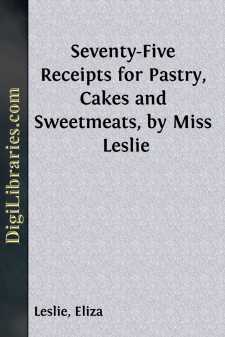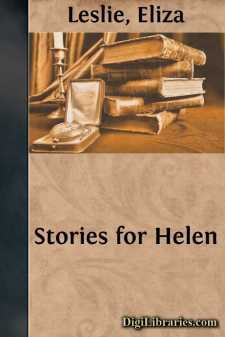Categories
- Antiques & Collectibles 13
- Architecture 36
- Art 48
- Bibles 22
- Biography & Autobiography 813
- Body, Mind & Spirit 142
- Business & Economics 28
- Children's Books 17
- Children's Fiction 14
- Computers 4
- Cooking 94
- Crafts & Hobbies 4
- Drama 346
- Education 46
- Family & Relationships 57
- Fiction 11829
- Games 19
- Gardening 17
- Health & Fitness 34
- History 1377
- House & Home 1
- Humor 147
- Juvenile Fiction 1873
- Juvenile Nonfiction 202
- Language Arts & Disciplines 88
- Law 16
- Literary Collections 686
- Literary Criticism 179
- Mathematics 13
- Medical 41
- Music 40
- Nature 179
- Non-Classifiable 1768
- Performing Arts 7
- Periodicals 1453
- Philosophy 64
- Photography 2
- Poetry 896
- Political Science 203
- Psychology 42
- Reference 154
- Religion 513
- Science 126
- Self-Help 84
- Social Science 81
- Sports & Recreation 34
- Study Aids 3
- Technology & Engineering 59
- Transportation 23
- Travel 463
- True Crime 29
Seventy-Five Receipts for Pastry, Cakes and Sweetmeats, by Miss Leslie
by: Eliza Leslie
Categories:
Description:
Excerpt
PART THE FIRST.
PASTRY
The eggs should not be beaten till after all the other ingredients are ready, as they will fail very soon. If the whites and yolks are to be beaten separately, do the whites first, as they will stand longer.
Eggs should be beaten in a broad shallow pan, spreading wide at the top. Butter and sugar should be stirred in a deep pan with straight sides.
Break every egg by itself, in a saucer, before you put it into the pan, that in case there should be any bad ones, they may not spoil the others.
Eggs are beaten most expeditiously with rods. A small quantity of white of egg may be beaten with a knife, or a three-pronged fork.
There can be no positive rules as to the exact time of baking each article. Skill in baking is the result of practice, attention, and experience. Much, of course, depends on the state of the fire, and on the size of the things to be baked, and something on the thickness of the pans or dishes.
If you bake in a stove, put some bricks in the oven part to set the pans or plates on, and to temper the heat at the bottom. Large sheets of iron, without sides, will be found very useful for small cakes, and to put under the pans or plates.
PUFF PASTE.
Half a pound and two ounces of sifted flour.
Half a pound of the best fresh butter—washed.
A little cold water.
This will make puff-paste for two Puddings, or for one soup-plate Pie, or for four small Shells.
Weigh half a pound and two ounces of flour, and sift it through a hair-sieve into a large deep dish. Take out about one fourth of the flour, and lay it aside on one corner of your pasteboard, to roll and sprinkle with.
Wash, in cold water, half a pound of the best fresh butter.
Squeeze it hard with your hands and make it up into a round lump.
Divide it in four equal parts; lay them on one side of your
paste-board, and have ready a glass of cold water.
Cut one of the four pieces of butter into the pan of flour. Cut it as small as possible. Wet it gradually with a very little water (too much water will make it tough) and mix it well with the point of a large case-knife. Do not touch it with your hands. When the dough gets into a lump, sprinkle on the middle of the board some of the flour that you laid aside, and lay the dough upon it, turning it out of the pan with the knife.
Rub the rolling-pin with flour, and sprinkle a little on the lump of paste. Roll it out thin, quickly, and evenly, pressing on the rolling-pin very lightly. Then take the second of the four pieces of butter, and, with the point of your knife, stick it in little bits at equal distances all over the sheet of paste. Sprinkle on some flour, and fold up the dough. Flour the paste-board and rolling-pin again; throw a little flour on the paste and roll it out a second time. Stick the third piece of butter all over it in little bits. Throw on some flour, fold up the paste, sprinkle a little more flour on the dough, and on the rolling-pin, and roll it out a third time, always pressing on it lightly. Stick it over with the fourth and last piece of butter....




